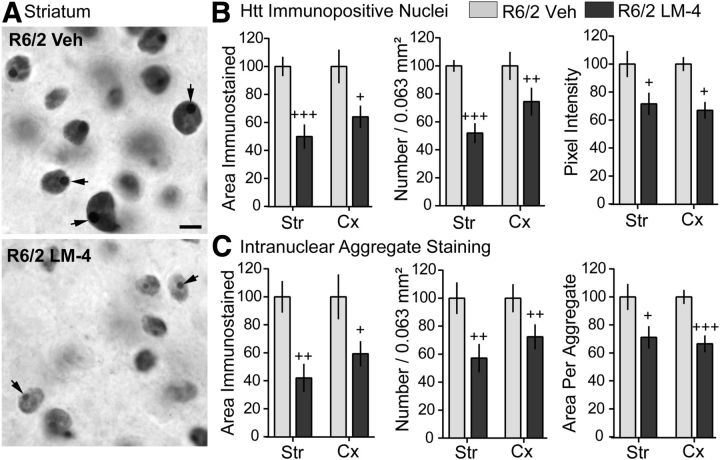Figure 2.
LM22A-4 reduces diffuse and aggregated huntingtin in nuclei of striatal and cortical neurons of R6/2 mice. A, Representative photomicrographs showing nuclear huntingtin immunostaining in striatum of R6/2 mice treated with vehicle (Veh; top) or LM22A-4 (LM-4; bottom). Diffuse huntingtin immunostaining was lighter and surrounded the huntingtin aggregates (arrows), which appeared smaller and less numerous in R6/2 mice given LM-4 (n = 9 mice) compared with those given Veh (n = 7 mice). Scale bar, 5 μm. Quantitative analyses of a sample field (0.063 mm2) in striatum (Str) and cortex (Cx) of one section per mouse confirmed these observations. B, The total area, number, and intensity of nuclei containing diffuse huntingtin staining decreased with LM-4 treatment in both brain areas (+p ≤ 0.05, ++p ≤ 0.01, and +++p ≤ 0.001 vs R6/2 veh). C, The total area occupied by huntingtin aggregates was reduced in Str and Cx due to a decrease in aggregate number and size (+p ≤ 0.05, ++p ≤ 0.01, and +++p ≤ 0.001 vs R6/2 veh). Results are normalized to the R6/2 vehicle group and expressed as mean ± SEM. Statistical significance was determined with a two-tailed Student's t test.

